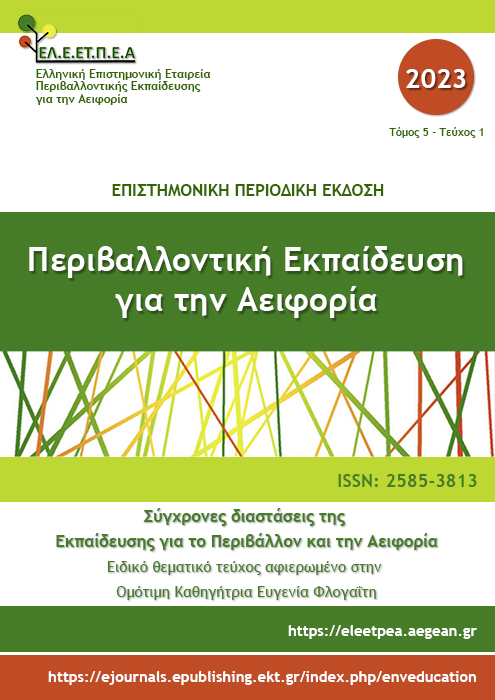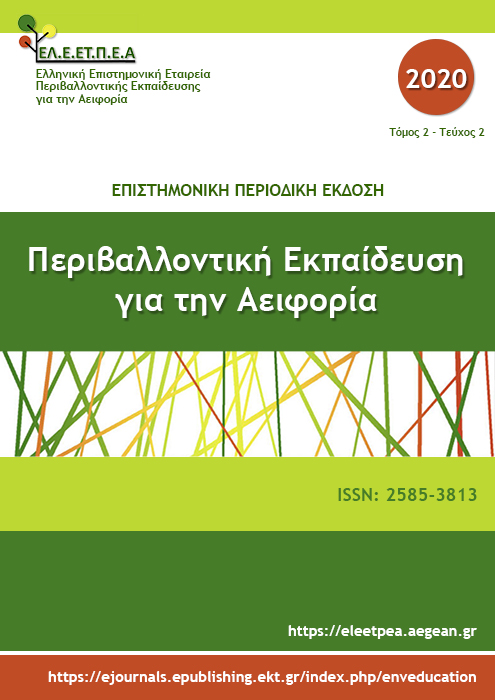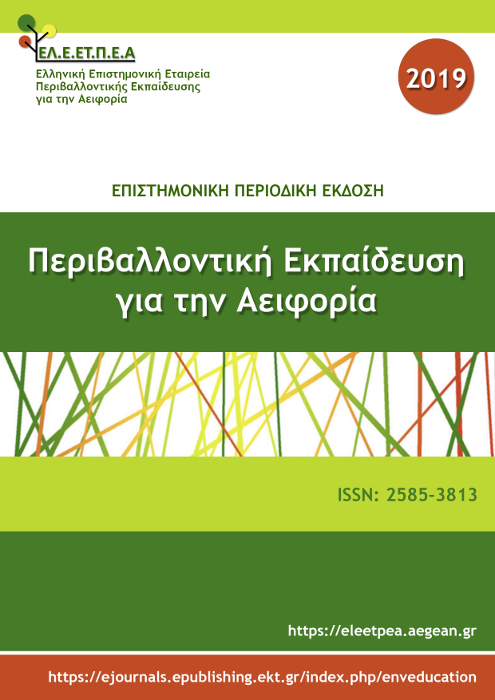H απομάγευση του φυσικού κόσμου και η υπόσχεση της ενσυνειδητότητας στο πλαίσιο της παιδαγωγικής πράξης

Περίληψη
Η εργασία αυτή επιχειρεί να αναδείξει την ανάγκη επαναπροσδιορισμού της σχέσης μας με τον φυσικό κόσμο στο πλαίσιο της περιβαλλοντικής εκπαίδευσης μέσα από μία ενσώματη και πνευματική προσέγγιση. Σε αυτό το άρθρο θα συζητήσουμε για τη χαμένη πνευματικότητα στη σχέση μας με τον υπόλοιπο φυσικό κόσμο, αλλά και για την ανάγκη της συμπερίληψης του σώματος και του πνεύματος στην παιδαγωγική πράξη. Στο μονοπάτι αυτό, θα αξιοποιήσουμε αρχές και μεθόδους της πνευματικής οικολογίας και της στοχαστικής ή περισυλλογιστικής παιδαγωγικής. Θα παρουσιάσουμε πώς μπορεί να συμβάλει η ενσυνειδητότητα στη θεραπεία της απομάγευσης του φυσικού κόσμου, αλλά και στην οικοκεντρική προσέγγιση της παιδαγωγικής πράξης. Τέλος, θα κάνουμε πιο απτή την πρόταση για την ενσωμάτωση της ενσυνειδητότητας στην περιβαλλοντική εκπαίδευση μέσα από τη σκιαγράφηση βασικών κατευθύνσεων που μπορούν να αποτελέσουν πεδίο παιδαγωγικής έρευνας και πράξης με επίκεντρο τη διαμόρφωση ενσώματης, πνευματικής ενσυναίσθησης για τον μη ανθρώπινο κόσμο και την οικοκεντρική επανατοποθέτησή μας στο περιβάλλον.
Λεπτομέρειες άρθρου
- Πώς να δημιουργήσετε Αναφορές
-
Τσεβρένη Ί. (2023). H απομάγευση του φυσικού κόσμου και η υπόσχεση της ενσυνειδητότητας στο πλαίσιο της παιδαγωγικής πράξης. Περιβαλλοντική Εκπαίδευση για την Αειφορία, 5(1), 124–134. https://doi.org/10.12681/ees.35772
- Ενότητα
- Articles

Αυτή η εργασία είναι αδειοδοτημένη υπό το CC Αναφορά Δημιουργού – Μη Εμπορική Χρήση – Παρόμοια Διανομή 4.0.
Οι συγγραφείς διατηρούν τα πνευματικά δικαιώματα και παρέχουν στο περιοδικό το δικαίωμα της πρώτης δημοσίευσης μαζί με την αδειοδότηση της εργασίας με CC-BY-NC-SA, που επιτρέπει σε άλλους να μοιράζονται αυτή την εργασία με αναγνώριση του συγγραφικού δικαιώματος και την αρχική δημοσίευση σε αυτό το περιοδικό.




